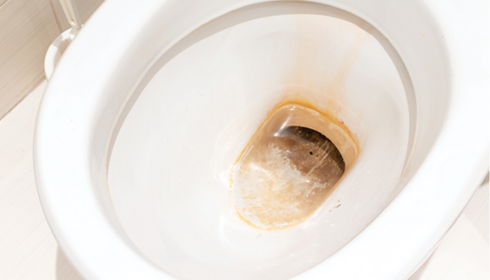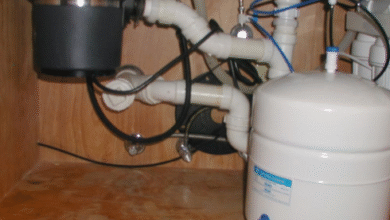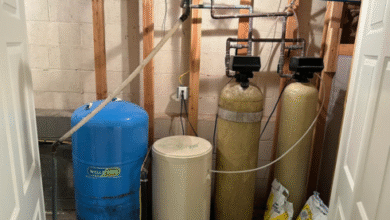
What’s With the Blue-Green Stains? Understanding Water Discoloration in South Lyon Homes
You scrub the sink. You clean the tub. You even change your water filters on time. And yet—there it is. That odd, chalky blue-green ring around the drain or a strange tint on the bathroom fixtures. It’s not just an aesthetic issue—it’s a symptom. And if you live in South Lyon, MI, chances are, you’re not the only one spotting it.
These stubborn stains aren’t random. They’re usually tied to a deeper problem hiding in your water lines. If you’ve been wondering what’s causing it, or more importantly—how to stop it—you’re in the right place.
Let’s dig into what those blue green stains in water South Lyon MI actually mean, why they happen, and what you can do to kick them to the curb for good.
The Blue-Green Mystery Solved
First off, those stains? They’re most commonly caused by copper staining. And no, it doesn’t mean someone’s been pouring copper pennies down the drain.
Here’s the science-y bit in plain English: when copper plumbing begins to corrode, tiny bits of that metal dissolve into your water supply. Once the water comes into contact with surfaces (like porcelain, ceramic, or stainless steel), those dissolved particles oxidize, leaving behind the bluish-green hue you’re seeing in sinks, tubs, and toilets.
It’s a slow, subtle process—so subtle, in fact, that you might not notice it right away. But over time, the buildup becomes more visible. And the longer you let it go, the more difficult it becomes to clean—and treat.
But Why Is This Happening in South Lyon?
Good question. The answer lies in local water chemistry.
South Lyon’s water, like many areas in Michigan, can lean toward being slightly acidic. That low pH is a major culprit. Acidic water eats away at copper pipes more aggressively, especially in older homes with original plumbing. Even newer copper systems aren’t immune if the water isn’t properly treated.
Pair that with fluctuations in temperature, high oxygen content, or excess chlorine in municipal water, and you’ve got a perfect cocktail for corrosion.
Still, it’s not always easy to trace. Some homes on one side of town might be perfectly fine, while others just a mile away could be battling daily discoloration in water and pipe degradation. That’s why testing matters.
Is It Dangerous?
Most of the time, copper in water at low levels isn’t hazardous. The EPA does set a maximum contaminant level goal of 1.3 mg/L for copper in drinking water. When levels stay under that threshold, the concern is mostly cosmetic—staining, odd taste, metallic aftertastes.
But when levels creep higher? That’s where things get serious.
Excess copper can cause gastrointestinal issues in humans and is especially risky for infants or people with certain health conditions. And beyond health concerns, aggressive copper corrosion means your plumbing is wearing down faster than it should. Which, if left unchecked, can mean costly pipe replacements or surprise leaks in the future.
How to Spot It (If You Haven’t Yet)
Even if you haven’t seen the stains, there may be other signs your water’s up to no good:
- A metallic taste in your tap water
- Slight green tint in standing water (like in a tub or toilet)
- Unusual etching or pitting on fixtures
- Rust-colored water suddenly turning bluish over time
- Recurring pinhole leaks in copper plumbing
If anything on that list sounds familiar, it’s time to get your water tested.
So… What’s the Fix?
Good news: you don’t have to live with it.
Step one is getting your water professionally tested. That’ll give you a full breakdown of pH, mineral content, copper levels, and more. Once you know what you’re working with, the right solution can be tailored to your home.
Most commonly, treating the issue involves installing a neutralizing system—a filter that adjusts the pH of your water before it even hits your pipes. This prevents acidic water from eating away at copper. In other cases, replacing sections of old copper piping might be recommended, especially if damage is already extensive.
Point-of-use filters can also help at sinks where you drink or cook with water, ensuring it’s safe and pleasant to use.
For many homeowners in South Lyon, working with a local expert like State Soft Water has been a game-changer. They’ve seen it all—from mild pH imbalances to full-on plumbing replacements due to years of untreated corrosion.
The Takeaway
Blue-green stains aren’t just a weird quirk of Michigan living. They’re a signal—a red (well, blue-green) flag that something in your water needs attention. It might not be an emergency today, but left alone, it could turn into one.
So if you’ve been dealing with blue green stains in water South Lyon MI, copper staining, discoloration in water, don’t shrug it off. Get your water checked. Talk to someone who knows how to diagnose and solve these things properly.
Because water should support your home, not stain it.
And honestly? Once those stains are gone and your water tastes better, your sinks sparkle a little brighter, and your plumbing breathes easier—you’ll wonder why you waited so long.




